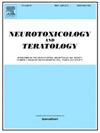Substance use and mental health symptoms in adults with prenatal alcohol exposure
IF 2.8
3区 医学
Q3 NEUROSCIENCES
引用次数: 0
Abstract
Background
Substance use and mental health problems have been documented in individuals with prenatal alcohol exposure (PAE) in young adulthood, but little is known about how these patterns progress over time into midlife. The current study examined rates of substance use in a sample of adults with PAE in mid-life compared to a demographically similar contrast group.
Methods
Participants (n = 233) were drawn from two longitudinal cohorts of individuals recruited prenatally and followed into adulthood. Measures of cognition, substance use, and self-reported mental health functioning were obtained.
Results
Differences among groups (PAE no dysmorphology, PAE with dysmorphology, No PAE contrast group) were examined on demographic variables of interest and substance use outcomes. Both PAE groups experienced higher levels of Adverse Childhood Experiences (ACEs) compared to the contrast group. We also observed higher rates of current tobacco use in those with PAE; those with PAE and no dysmorphology had almost twice the rate of current tobacco use as the nonexposed contrast group. We observed similar rates of high risk drinking on the Alcohol Use Identification Test (AUDIT) in all groups. Individuals with PAE also showed high rates of cannabis use compared to national averages. Generalized linear regressions examining predictive effects of PAE on substance use outcomes did not show significant results, though female sex at birth was predictive of current cannabis use. Current alcohol use predicted depression and PTSD symptoms, and significant interactions were observed between PAE group and ACEs on depression, PTSD, anxiety, and psychotic symptoms.
Conclusion
This is one of the only studies to examine rates of alcohol and other substance use among adults in mid-life with PAE. Results suggest that relationships between PAE, substance use, and mental health symptoms are complex, and it will be important for future studies to examine factors associated with high-risk substance use among this vulnerable population.
产前酒精暴露成人的物质使用和心理健康症状
背景:物质使用和精神健康问题已被记录在成年早期产前酒精暴露(PAE)的个体中,但很少有人知道这些模式是如何随着时间的推移进入中年的。目前的研究检查了中年PAE成人样本的物质使用率,并将其与人口统计学上相似的对照组进行了比较。方法:参与者(n = 233)从产前招募的两个纵向队列中抽取,并随访至成年期。测量认知、物质使用和自我报告的心理健康功能。结果:比较各组(无畸形组、有畸形组、无畸形组)在兴趣和药物使用结果的人口统计学变量上的差异。与对照组相比,两个PAE组的不良童年经历(ace)水平都更高。我们还观察到PAE患者目前的烟草使用率较高;那些患有PAE但没有畸形的人的烟草使用率几乎是未暴露对照组的两倍。我们在酒精使用鉴定测试(AUDIT)中观察到所有组的高危饮酒率相似。与全国平均水平相比,PAE患者的大麻使用率也很高。检验PAE对药物使用结果的预测效果的广义线性回归没有显示出显著的结果,尽管女性出生时的性别可以预测当前的大麻使用情况。当前饮酒可预测抑郁和PTSD症状,PAE组和ace组在抑郁、PTSD、焦虑和精神病症状方面存在显著的相互作用。结论:这是唯一一项研究酒精和其他物质在中年PAE成年人中使用率的研究。结果表明,PAE、药物使用和精神健康症状之间的关系是复杂的,对于未来的研究来说,在这一脆弱人群中检查与高风险药物使用相关的因素将是很重要的。
本文章由计算机程序翻译,如有差异,请以英文原文为准。
求助全文
约1分钟内获得全文
求助全文
来源期刊
CiteScore
5.60
自引率
10.30%
发文量
48
审稿时长
58 days
期刊介绍:
Neurotoxicology and Teratology provides a forum for publishing new information regarding the effects of chemical and physical agents on the developing, adult or aging nervous system. In this context, the fields of neurotoxicology and teratology include studies of agent-induced alterations of nervous system function, with a focus on behavioral outcomes and their underlying physiological and neurochemical mechanisms. The Journal publishes original, peer-reviewed Research Reports of experimental, clinical, and epidemiological studies that address the neurotoxicity and/or functional teratology of pesticides, solvents, heavy metals, nanomaterials, organometals, industrial compounds, mixtures, drugs of abuse, pharmaceuticals, animal and plant toxins, atmospheric reaction products, and physical agents such as radiation and noise. These reports include traditional mammalian neurotoxicology experiments, human studies, studies using non-mammalian animal models, and mechanistic studies in vivo or in vitro. Special Issues, Reviews, Commentaries, Meeting Reports, and Symposium Papers provide timely updates on areas that have reached a critical point of synthesis, on aspects of a scientific field undergoing rapid change, or on areas that present special methodological or interpretive problems. Theoretical Articles address concepts and potential mechanisms underlying actions of agents of interest in the nervous system. The Journal also publishes Brief Communications that concisely describe a new method, technique, apparatus, or experimental result.

 求助内容:
求助内容: 应助结果提醒方式:
应助结果提醒方式:


